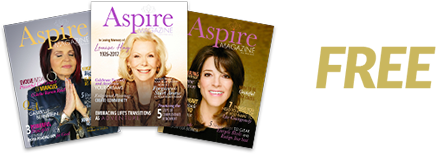
“Lisa, you need to make decisions.”
I heard the words, but I almost couldn’t take them in. My first job out of college, I was lucky to land in a department where the manager and two supervisors helped us identify the places we needed to grow and urged us to take specific steps to accomplish our objectives.
But that one sentence directive from my boss took months to sink in and grapple with.
Years later, I can tell you why. I didn’t know how to go within. I tended to look outside of myself for sources of wisdom, power and clarity. And you can’t make decisions just by looking out. Of course, there is a value to looking at externals to assess a situation or even to find possible solutions. But the final clarity—and often the most brilliant ideas—come from tapping into that inner wisdom—what I’ve come to refer to as “the muse.”
Now, when it’s decision time—time to choose—I tend to feel empowered. I often make decisions quickly, too. And it’s been one of the most freeing shifts in my life and business.
Back in that moment, last century, when my boss told me I needed to make decisions, the directive seemed overwhelming. I always felt I didn’t have enough information to make a decision. If I could just uncover the right information, perhaps I could make a decision. I had created this information myth. The truth? Most decisions are made with incomplete information.
Another truth, equally important: If your decision takes you in a direction you don’t want to go, you can correct your course. But if you just keep putting off the decision, you’ll never get on the path to begin with.
Writing—and journaling, in particular—can help you access your “muse” and get clarity—and answers—in your decision making process. The term “muse” comes from the ancient Greeks and refers to the goddesses who inspire the creation of literature and the arts. I view the muse as one of our wise inner teachers who serves as source of creativity, inspiration and ideas. Your Muse also knows exactly what you need at any given moment to support your creative processes and decision making.
Here’s how to access your muse to make a decision:
1. Pick a specific issue where you need to make a decision—anything from which job to take to what color to paint your bedroom.
2. Imagine making one decision and write about it in detail—employing all of your senses. For example, what does your bedroom look like, feel like, smell like when you paint it chartreuse? What do you imagine it’s like to wake up in that chartreuse room? And how about going to sleep in it?
3. After you’ve written about the option in detail, read it over aloud and check in to see how it feels in your body to connect with that experience. Notice if there is a particular part of your body you are drawn to. What sensations do you feel in that part of your body? If that part of your body could talk, what would it say? Write about what you are feeling in your body and explore the questions.
4. Now try that exercise with the other alternative if you have identified one, in this case, perhaps a bubblegum pink room.
Now, you have a writing/journaling tool for making a sample decision—where you already have laid out the choices. What about a more complex decision—one where you need some creative ideas? Let’s say you’re trying to find a name for your new company.
In that case, I suggest a “visit with your muse.”
Just as dreams are symbolic, your muse appears symbolically—and may change form over time.
So, how do you access this inner wise being that can:
- Bring clarity in the mist of overwhelm or confusion
- Help you focus and know your next steps
- Support you to break through any emotional blocks—sometimes in an instant
- Help you experience your brilliance and creativity in all its glory
- Provide answers on creative projects
I take my clients and class participants on an inner journey to meet their muse. Here’s a shorter version of the visualizations I do in my book writing courses:
- Sit in a chair, feet on the floor.
- Close your eyes.
- Experience the chair supporting your body
- Bring your attention to our feet and feel the support of the floor—and the earth beneath that.
- Notice your breath.
- Allow your spine to gently straighten.
- Now, imagine yourself walking a path to a building where your muse is waiting for you.
- Walk the path, noticing what you see, hear, smell, feel and even taste.
- Enter the building and find your muse.
- You can ask your muse questions, or support to move through a block.
- You may question the answers, “Am I making this up?” Don’t worry. It doesn’t matter if you are. Just trust that this is what you need to hear.
- When you’re ready, thank your muse and see yourself returning the way you came.
- Open your eyes and write down your answers.
Be sure to take time to write your answers afterwards. Some people go so deep they may not remember. If that’s you, have someone guide you through the visualization and talk you through it—where you provide answers and they record them as you go so you can listen later. These sessions can be very rich. You may even want to use an audio recording program to record your answers as you do this.



